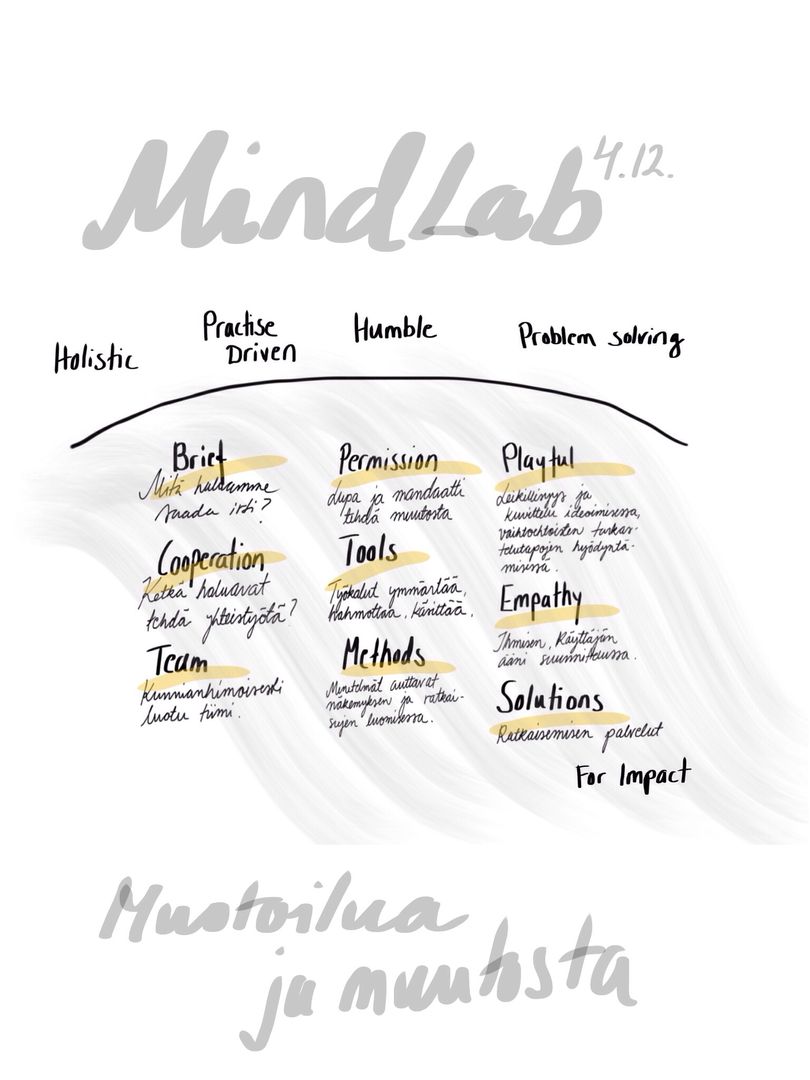The Forum for New Security paid a five-day visit to Copenhagen (1-5 December 2013) to view solutions developed in Denmark for new security. In this blog series, the travellers share their inspirations from their trip.
“We contribute a human voice to the development of solutions,” sociologist and project manager Jakob Schjørring stated during our visit to MindLab, a joint venture between three Danish ministries and the municipality of Odense. MindLab was established for the creation of new, more agile methods of developing Danish society in a direction more supportive of humane values and sustainable development and providing it with the capability to face the nasty challenges of now and the future.
Our group of visitors was impressed with Jakob’s presentation on MindLab. I paused to listen to what others in my group were discussing after the visit. What aspect of the presentation had been the most thought-provoking for them? What insights had they gained from the visit? Their conversations revealed that the most powerful realisation was that a relatively small multidisciplinary group such as MindLab could achieve critical results – socially significant proposals and descriptions that set an example on how to resolve issues together and which can be used as tools for committing and engaging various stakeholders in joint problem-solving efforts.
MindLab is intended to provide a description of whatever issue requires solving through background information, real-life contexts and defining the significance and effects of the challenge, as well as finding the relevant development approach and gaining traction in the more agile solution of problems. In design, this phase is called briefing, which means giving instructions for an assignment. Briefing takes place at the beginning of a design process, when nothing is yet clear, and the design team is attempting to identify and analyse the needs, wishes, opportunities and limitations related to the design target.
No one can enact solutions to nasty problems themselves; solving such issues requires a range of multitalented actors. But even a small group, such as a close-knit co-design and problem-solving team, can create an understanding and vision on a co-development policy for the solution – to serve as road signs and a map – by means of experimentation and taking a delicate grasp of the problem from multiple angles. At the same time, the journey should have a common destination, purpose and mission. Along the way, demonstrations and evidence must be provided, showing that the chosen path complies with the common vision. As Jakob said in his presentation: “One of the key things is to achieve immediate successes, which verify that choosing a common path was a good decision.”
Examples of how to design solutions for new security can be found in Denmark, where a human-centric approach is being used to solve key challenges of all sizes. Of course, it is necessary to identify and have a broad understanding of complex challenges and their mutual connections and dependencies, but methods of impacting on evolving processes and phenomena that are extensive in impact need to be scaled down to human size. Participation and seeking solutions should be possible for us all – in our everyday lives, at work and during leisure time. In Finland, we have a lot of work to do in this respect. In recent decades, our approach has been distorted into one where we wait for our decision-makers at central or local government level to give us ready-made instructions and recommendations on how to solve our problems. But who will take responsibility for doing such work? Do our decision-makers and implementers have a shared vision of the issue and how to solve it? In the midst of all this, what means are available to individuals? How much thought has gone into them and how are they presented? A more extensive foundation for building a secure, resilient Finnish society based on sustainable development will be created through processes in which everyone is tasked with helping others to generate meaningfulness.
Recommended reading for anyone interested in design, social innovations and political decision-making: DESIS Network, Public & Collaborative: Exploring the Intersection of Design, Social Innovation and Public Policy; edited by Eduardo Staszwoski
Katriina Lahtinen is a designer specialising in services and interaction design



Recommended